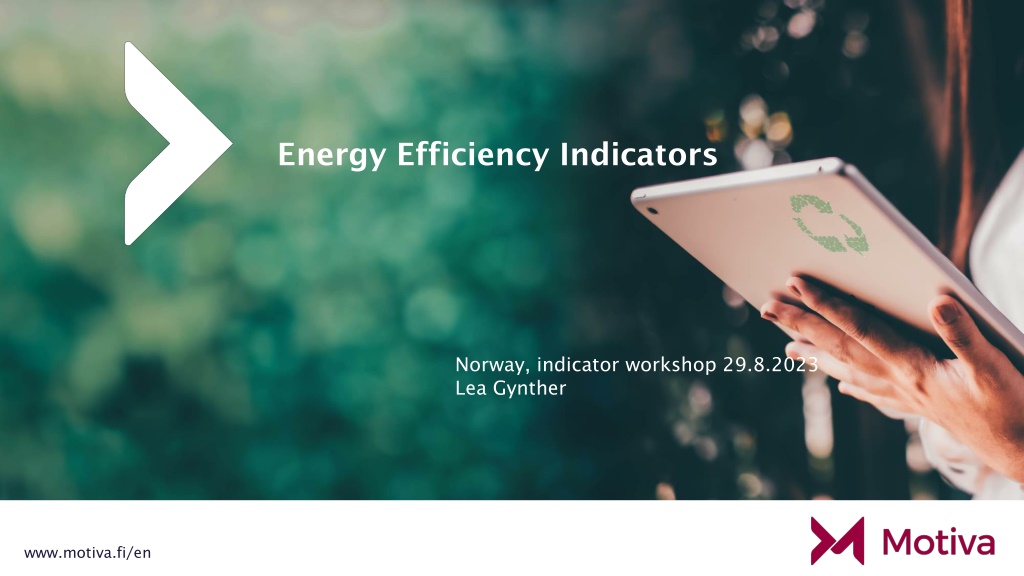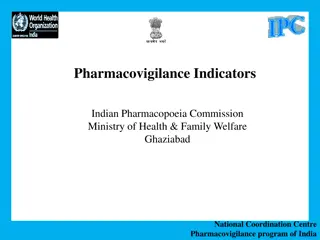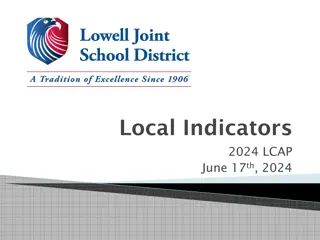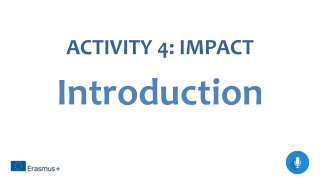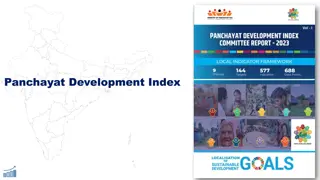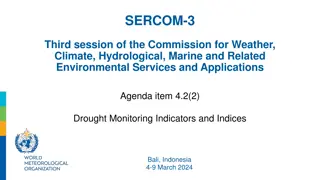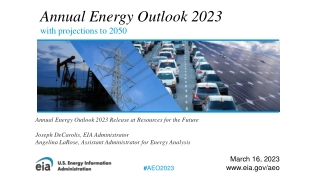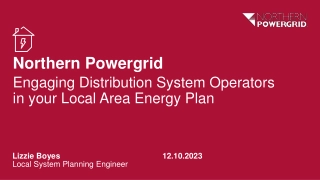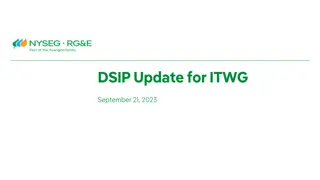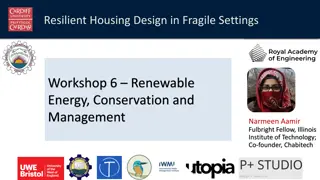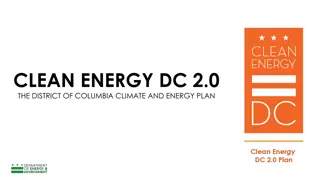Energy Efficiency Indicators
Explore the latest findings from energy efficiency indicator studies in Norway and Finland, focusing on trends, drivers, and the role of these indicators in policy-making. Discover the challenges and opportunities presented by various energy efficiency metrics, along with recommendations for effective monitoring and progress evaluation. Gain valuable insights into the current state of energy efficiency practices in these countries and the way forward.
Download Presentation
Please find below an Image/Link to download the presentation.
The content on the website is provided AS IS for your information and personal use only. It may not be sold, licensed, or shared on other websites without obtaining consent from the author. Download presentation by click this link. If you encounter any issues during the download, it is possible that the publisher has removed the file from their server.
Presentation Transcript
Energy Efficiency Indicators Norway, indicator workshop 29.8.2023 Lea Gynther <<<<<<<<<<c www.motiva.fi/en
Table of Contents Energy Efficiency Indicator Studies in Finland The Good, The Bad and The Ugly Way Forward? 29.8.2023
Use of Energy Efficiency Indictors in Finland Energy efficiency indicators do not have a strong designated role in Finland, e.g., no targets are set for their levels. Summary of views: aggregate indicators such as energy intensities should be interpreted with extreme care. Lower-level indicators (e.g. diffusion indicators for certain technologies or specific consumption) are generally much better to monitor progress. Energy Efficiency Trends and Drivers, a set of indicators has been produced annually for almost twenty years by Motiva for the national authorities (see next slides). A series of sectoral energy efficiency indicator reports has been conducted to increase understanding of indicators and their usability and to respond to questions raised by international comparisons (see next slides). 29.8.2023
Energy Efficiency Trends and Drivers Normalized specific space heat consumption per permanently occupied dwelling Primary and final energy intensities, intensity of electricity use / total and sectoral indicators, industrial sub-sectors Normalized specific consumption of DH in domestic and service sector buildings Primary and final energy per capita Losses-%, electricity and district heat Average floor area by type of dwelling and occupancy rate of dwellings Share of CHP production (power+DH) Power plant efficiencies (CHP, electricity and heat only) Long term average degree days and annual averages Specific consumption of steel and pulp&paper Electricity consumption per free-time residence Specific consumption of cars, buses, rail Population and number of households Specific consumption of trucks and freight rail Average household income CO2 emissions of new passenger cars Electricity consumption per employee in the services sector Average specific consumption of new cars New cars by engine capacity Surface area of service sector buildings A range from good to bad indicators. We need to know the levels of all of them. Passenger cars per household Unit consumption of heat per m2 in services Unit consumption of electricity per m2 in services 29.8.2023
Indicator Studies in Finland Indicator studies (reports in English): Report on data centers (2022), Motiva Oy Commerce sector (2021); Motiva Oy and Granlund Oy Metals production industry (2020); Motiva Oy and data from Wood MacKenzie Pulp and paper industry (2019); VTT and simulations by Fisher International Ltd Report on country comparisons, e.g., decomposition (2018); VTT 29.8.2023
Study Implementation Financed by the Finnish Energy Authority with some sector contributions (pulp and paper) Steering group consisted of industry associations and major companies to ensure industry insights: Commerce sector: Kesko (K-Group), Lidl, S-Group, Stockmann Basic metals: Boliden, Outokumpu, Ovako, SSAB Finland Pulp and paper: Mets Group, Stora Enso, UPM Data centers: Finnish Data Center Association (FDCA); forum reps duplicate as data center operators and designers Objectives of the first three studies above were to get insights at the operator/site level on the actual energy efficiency and to find factors which may distort comparisons. Study in the data center sector concentrated on implementation of the recast Energy Efficiency Directive. 29.8.2023
The Good, The Bad and The Ugly 29.8.2023
Objectives What is the motivation for considering energy efficiency indicators: Identifying driving forces behind observed trends? Setting targets and monitoring progress at aggregate level? Tracking of the policy impact? Benchmarking within the country or with other countries? Level of indicators: Monitoring at the national, regional, local or operator level? 29.8.2023
What Makes a Good Indictor? It should be ensured that the indicators actually measure either energy efficiency or monitor drivers for energy efficiency, not something else like productivity. Preferably energy efficiency indicators measuring input of energy per some kind of output, e.g. energy per tonne of product or per heated floor area in occupied dwellings. Good data quality (reliability of data, no data breaks, no changes in definitions over time etc.). System boundaries should be considered. Are you exporting a lot of energy inputs embedded in the product (e.g. in pulp) but another country re-processes it into higher value products (e.g. glossy paper) Do the sub-systems remain the same within the system boundary over time?
Problematic Indicators Energy intensity (energy per value added): Does not monitor energy efficiency but rather productivity etc. Also energy per production index is at least partly related to economic considerations, not only to physical production. Energy consumption per employee: No clear link exists between these two and pursuit for cost-effectiveness in businesses drives the indicator upwards. Specific electricity consumption (e.g. per floor area or product volume): Electricity consumption is growing as society electrifies (stronger focus on emission reductions) or heat pumps are used to capture waste heat (in whose energy balance are they?). Indicators should not necessarily be applied in the same way for all installation sizes (e.g. in the commercial sector specific consumption should be calculated separately for different size categories). 29.8.2023
Metal Industry Indicators, Finland Note: Figures have partly different definitions. 29.8.2023
Questionable Use of Indicators Indicators are at their best in monitoring progress within one country. Finding good indicators for country comparisons is difficult (normalization needs, challenging analytical boundaries, data quality issues). Highly aggregated indicators: + Availability of data (usually based on basic statistics) - Omit important considerations such as industry structure (outsourcing of sub-processes), production methods (e.g. electric or oxygen steelmaking), raw materials used (virgin/recycled), product mix (bulk/specialized), operation conditions etc. 29.8.2023
Odyssee-Mure Scoreboard Industry: Energy efficiency level (calculated relating consumption to value added except physical quantity for pulp&paper in Finland and Sweden) Really? 29.8.2023
Other Methodological Considerations Climate change corrections: National HDD vs. Eurostat data HDD does not correct weather variations perfectly in extreme years Other valid sustainability considerations may affect energy consumption and energy efficiency, such as aim to use raw materials efficiently and to reduce generation of waste. Decomposition is a potentially interesting tool for monitoring the reasons behind observed changes in energy consumption. However, attention should be paid, e.g., to the indicators used and coherent datasets. Results published by different institutions vary even when same input data is used. 29.8.2023
ODYSSEE Decomposition, Industry, Norway 29.8.2023
Way Forward? 29.8.2023
Further Reading IEA: Roadmap on Demand-side data and energy efficiency indicators (Feb 2023) Energy Efficiency Indicators: Essentials for Policy Making (2014) EU ODYSSEE-Mure Project 29.8.2023
Elements to Consider Data sources and management Continuous improvement cycle Responsibilities Indicators Resources Dissemination Analysis 29.8.2023
Thank you! Lea.Gynther@motiva.fi www.motiva.fi @MotivaOy 29.8.2023
